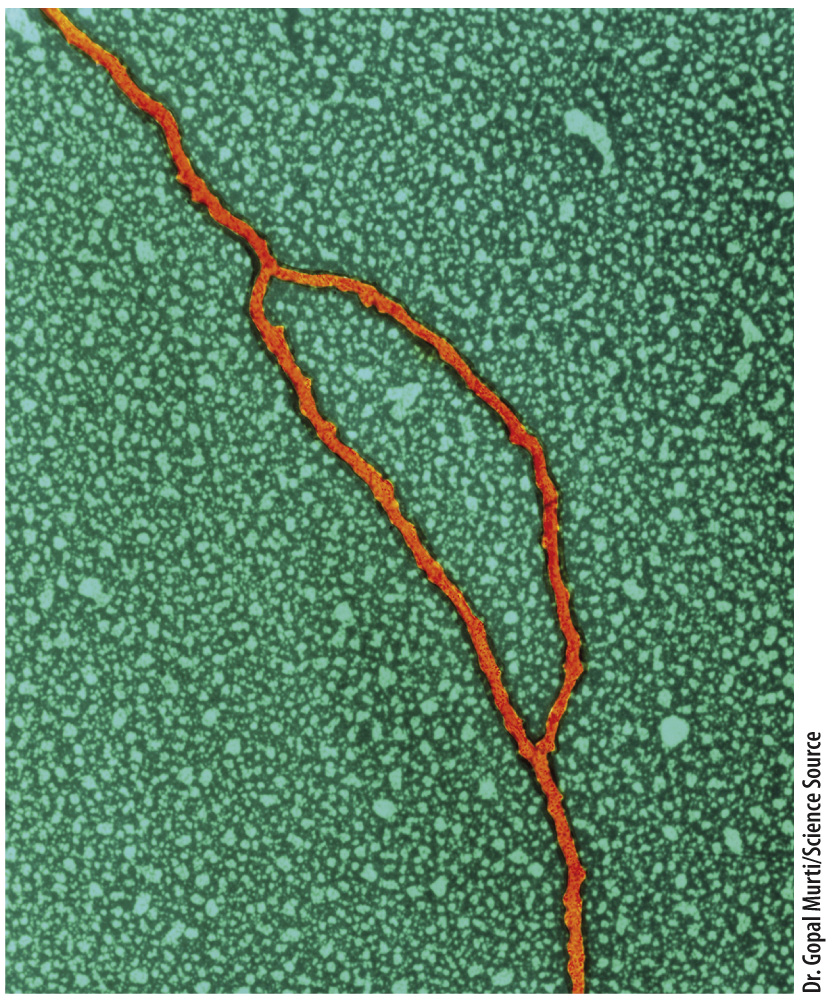Chapter 12 Introduction
247
CHAPTER 12
DNA Replication and Manipulation

Core Concepts
- In DNA replication, a single parental molecule of DNA produces two daughter molecules.
- The replication of linear chromosomal DNA requires mechanisms that ensure efficient and complete replication.
- Techniques for manipulating DNA follow from the basics of DNA structure and replication.
- Genetic engineering allows researchers to alter DNA sequences.
248
One of the overarching themes of biology discussed in Chapter 1 is that the functional unit of life is the cell, a theme that rests in turn on the fundamental concept that all cells come from preexisting cells. In Chapter 11, we considered the mechanics of cell division and how it is regulated. Prokaryotic cells multiply by binary fission, whereas eukaryotic cells multiply by mitosis and cytokinesis. These processes ensure that cellular reproduction results in daughter cells that are like the parental cell. In other words, in cell division, like begets like. The molecular basis for the resemblance between parental cells and daughter cells is that a double-
The process of duplicating a DNA molecule is called DNA replication, and it occurs in virtually the same way in all organisms, reflecting its evolution very early in life’s history. The process is conceptually simple—